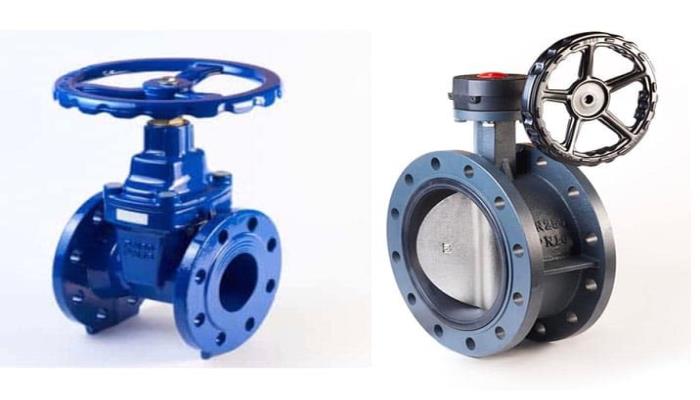Check Valve VS Gate Valve: Which Is Better?

Controlling the flow of fluids in pipelines and structures is the issue. Engineers and operators often choose to use a check valve or a gate valve. Both sorts of valves serve high-quality purposes and offer unique benefits and drawbacks. In this complete evaluation, we can find out the variations among them. Look at valves and gate valves. They will help you decide to choose one and which is better for your software.
Understanding Check Valves
Check valves are also known as non-return valves or one-way valves. They allow fluid to flow in one direction and stop reverse flow. These valves work robotically. They start when the fluid flows in the meant path. They close to prevent backflow. Check valves usually have a movable disc, ball, or flap. It opens or closes in response to fluid pressure.
Advantages of Check Valves:
Check valves to prevent backflow. They save you from the drift of fluids. They ensure one-way flow in pipelines and systems.
Check valves have a simple format. They need more moving parts. This lowers renovation needs and the risk of mechanical failure.
Check valves are suitable for low-pressure programs. They suit programs with low-stress needs, like home plumbing and irrigation systems.
Disadvantages of Check Valves:
Limited go with the flow management: Check valves provide restrained management over fluid flow, as they are most straightforward, open, or near, based on fluid strain. They can not regulate go together with the drift charge or offer throttling functionality.
A water hammer can happen when certain conditions cause fast valve closure. It causes stress surges and can damage pipes and gadgets.
Understanding Gate Valves
Gate valves are linear movement valves. They control the flow of fluids by raising or lowering a disc to block or allow passage through the valve. These valves are often used in applications that need full flow or close-off. These applications include water and fuel systems and commercial strategies.
Advantages of Gate Valves:
Precise glide management: Gate valves offer accurate management over fluid go with the flow, permitting operators to regulate float charges using partly starting or lasting the valve.
High-strain capability: Gate valves can cope with excessive-strain applications, making them appropriate for use in industrial settings and critical infrastructure systems.
Resistant to water hammer: Gate valves are much less prone to water hammer than check valves, as their operation includes slower beginning and remaining speeds.
Disadvantages of Gate Valves:
Potential for leakage: Gate valves may additionally reveal leakage over time, in particular in programs in which the sealing surfaces are subject to put on and corrosion.
Higher renovation requirements: Gate valves have a more excellent and complicated design with multiple moving elements, increasing the threat of mechanical failure and requiring everyday maintenance and inspection.
Slower operation: Gate valves typically have slower opening and final times than test valves, which may affect operational efficiency in specific packages.
Choosing Between Check Valve and Gate Valve:
When finding out between a test valve and a gate valve on your application, do not forget the following factors:
Flow necessities: If your number one state of affairs is preventing backflow and ensuring unidirectional glide, a test valve can be the widespread desire. However, a gate valve can be more appropriate if you require particular float manipulation and the potential to alter with-the-flow expenses.
Pressure score: A gate valve with high-stress functionality can be favored for excessive-pressure packages, industrial techniques, or critical infrastructure structures. Check valves are highly relevant for low-stress packages alongside residential plumbing systems.
Maintenance issues: Consider the protection requirements of every type of valve. Check valves have simpler designs with fewer moving components, resulting in decreased preservation necessities. However, gate valves can also offer more specific glide management but require everyday upkeep and inspection to ensure proper operation.
Cost issues: Compare the preliminary cost and prolonged-term working prices of each style of valves. While test valves can be more rate-powerful upfront, gate valves offer better lengthy-time period reliability and overall performance in sure packages.
Conclusion: Choose One
In the stop, the selection between a take a look at the valve and a gate valve is predicated upon your unique software program requirements, alongsidewith flow manipulation, stress score, renovation worries, and rate worries. Both styles of valves offer top-notch advantages and downsides, and the decision needs to be primarily based on an intensive assessment of your dreams and priorities. Whether you prioritize backflow prevention, unique flow control, or immoderate-strain capability, choose one that exquisite aligns along with your requirements to make sure best overall performance and reliability for your gadget or pipeline.
Factors to Consider When Choosing Between Check Valve and Gate Valve:
To further assist in making the decision between a check valve and a gate valve, here are additional factors to consider:
Application Environment: Evaluate the operating conditions of your application environment, including temperature, pressure, and the nature of the fluid being handled. Certain environments, such as corrosive or abrasive fluids, may require specialized valve materials or coatings to ensure long-term reliability and performance.
Installation Space: Consider the available space for valve installation and operation. Gate valves typically require more space due to their linear motion design, while check valves may offer a more compact footprint. Ensure that the chosen valve can be installed and operated effectively within the constraints of your application space.
System Compatibility: Assess the compatibility of the chosen valve with existing system components and infrastructure. Check for compatibility with piping materials, flange connections, and other valve accessories to ensure seamless integration and optimal performance.
Regulatory Compliance: Verify that the selected valve meets relevant industry standards and regulatory requirements for your application. Compliance with standards such as API, ANSI, ASTM, and ASME ensures that the valve meets quality, safety, and performance standards set by regulatory bodies and industry organizations.
Operational Considerations: Consider the ease of operation and maintenance of the chosen valve. Gate valves may require more frequent operation and maintenance to prevent seizing and ensure proper sealing, while check valves typically have simpler maintenance requirements. Choose a valve that aligns with your operational capabilities and maintenance schedule.
Life Cycle Cost Analysis: Conduct a lifecycle cost analysis to evaluate the total cost of ownership of each valve option over its entire service life. Consider factors such as initial purchase price, installation costs, maintenance expenses, and anticipated lifespan to determine the most cost-effective solution for your application.
Conclusion:
In conclusion, the decision between a check valve and a gate valve requires careful consideration of various factors, including application requirements, environmental conditions, system compatibility, regulatory compliance, operational considerations, and lifecycle cost analysis. By thoroughly evaluating these factors and choosing one that best meets your specific needs and priorities, you can ensure the optimal performance, reliability, and efficiency of your fluid control system or pipeline. Whether you prioritize backflow prevention, precise flow control, or long-term reliability, choose one that aligns with your requirements to achieve the desired outcomes and maximize the value of your investment.



